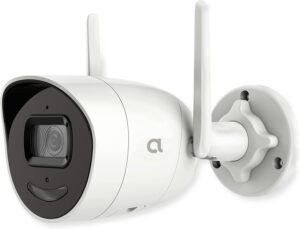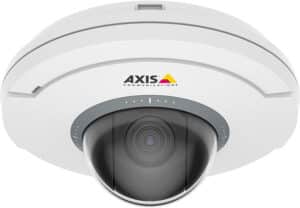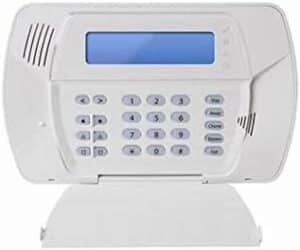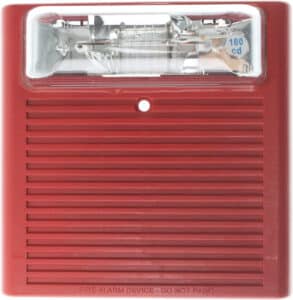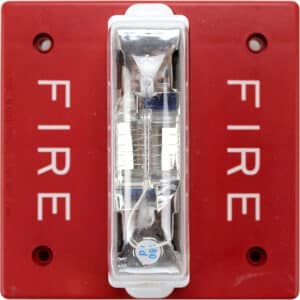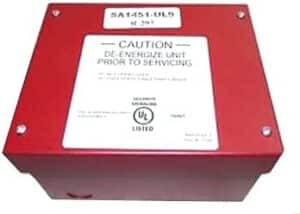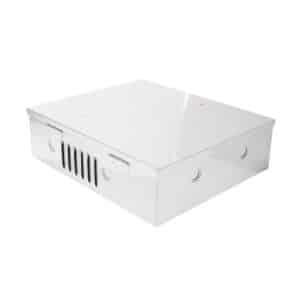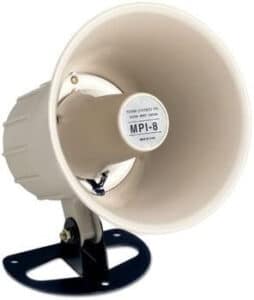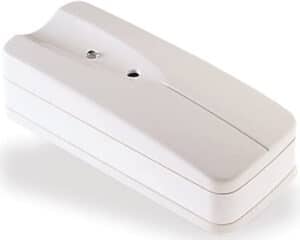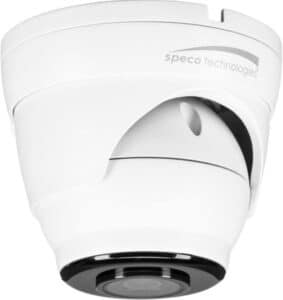As a property owner, safeguarding your investment from fire damage is a top priority. To ensure adequate protection, it is crucial to have a functioning fire alarm system in place. But many people often overlook the importance of regular fire alarm testing. A faulty fire alarm system can lead to disastrous consequences, including property damage and loss of life.
In this article, we will guide you through the steps on how to test a fire alarm system and identify potential issues before they become life-threatening. Follow these steps to confidently secure your property against fire damage and enjoy peace of mind knowing that your fire alarm system is functioning efficiently.
To learn more about home alarm and troubleshooting tips, go here.
Table of Contents
Understanding the Importance of Testing Fire Alarm Systems
When it comes to fire safety, there’s no room for complacency. Fire alarms play a crucial role in keeping you, your property, and your loved ones safe by providing early warning of a fire. However, a fire alarm system is only as good as its maintenance and testing. To ensure the safety of your property, it’s essential to understand how to test smoke detectors and carry out regular fire alarms testing.
Inadequate fire alarm maintenance can lead to false alarms or worse, failure to alert occupants in case of a fire. Regular fire alarm tests help identify potential issues before they escalate, ensuring the system functions optimally when needed. Moreover, testing smoke detectors and other fire alarm components is required to comply with fire safety regulations and maintain your insurance coverage.
Types of Fire Alarm Systems and How to Test Them
There are several types of fire alarm systems, each with its unique testing methods. Below, we will discuss the most common types and how to test them.
Conventional Fire Alarm Systems
Conventional fire alarm systems consist of manual call points, smoke detectors, and heat detectors all connected to a central control panel. To test these systems, you need to activate a manual call point or a detector and ensure that the control panel receives the signal and triggers the alarm.
Addressable Fire Alarm Systems
Addressable fire alarm systems use a more advanced technology that assigns a unique address to each device, allowing the control panel to identify the exact location of the activated device. To test these systems, activate a device and check if the control panel correctly displays the location of the triggered device. Additionally, the alarm should sound throughout the building.
Wireless Fire Alarm Systems
Wireless fire alarm systems operate similarly to addressable systems, but they use wireless communication between devices and the control panel. To test these systems, activate a device and ensure the control panel receives the signal and triggers the alarm. You should also check the signal strength of each device to ensure proper communication.
Frequency of Fire Alarm Testing and Maintenance
Regular fire alarm testing and maintenance are essential to ensure the system remains in optimal working condition. The frequency of testing depends on your local fire safety regulations, the type of system, and the specific requirements of your property. However, here are some general guidelines:
- Test smoke detectors and manual call points weekly or monthly, depending on local regulations.
- Perform a visual inspection of all devices and control panels every six months.
- Conduct a full system test by a qualified fire alarm inspector annually.
Keep in mind that these are general guidelines, and you should always consult your local fire safety regulations and the system manufacturer’s recommendations for the specific testing frequency.
Proper Steps to Test A Fire Alarm System
Testing a fire alarm system involves several crucial steps to ensure accurate results and compliance with fire safety regulations. Here’s a step-by-step guide on how to test smoke detectors and other components of a fire alarm system:
- Notify the necessary parties, including building occupants, monitoring center, and local fire department, that you will be conducting a fire alarm test.
- Perform a visual inspection of all devices, including smoke detectors, heat detectors, manual call points, and control panels, for any signs of damage or obstruction.
- Activate each device using a smoke detector tester or a heat detector tester, as appropriate. Ensure the control panel receives the signal and triggers the alarm.
- Check the sound level of the alarm to ensure it is audible in all areas of the building.
- Reset the system and ensure it returns to normal operation.
- Record the test results, including the date, time, devices tested, and any issues identified.
- Notify the necessary parties that the test is complete.
Always consult the system manufacturer’s recommendations and local regulations for specific testing requirements and procedures.
Common Issues with Fire Alarm Systems and How to Troubleshoot Them
During fire alarm testing, you may encounter some common issues that require troubleshooting. Here are a few examples and how to address them:
False Alarms
False alarms can be caused by a variety of factors, such as dust or insects in the detector, environmental factors, or faulty devices. To troubleshoot, clean the detector with a soft brush or compressed air, replace any faulty devices, and ensure the system is installed in accordance with the manufacturer’s guidelines.
Weak or No Signal
Weak or no signal between devices and the control panel can result from interference, low battery power, or faulty devices. To troubleshoot, replace batteries, ensure devices are installed within the recommended range, and check for any sources of interference, such as other wireless devices or structural elements.
Inaudible Alarm
If the alarm is not audible in all areas of the building, it may be due to a low battery, faulty alarm, or insufficient coverage. To troubleshoot, replace batteries, repair or replace any faulty alarms, and consider adding additional alarms to ensure adequate coverage.
Benefits of Regular Fire Alarm Testing and Maintenance
Regular fire alarm testing and maintenance provide numerous benefits, including:
- Ensuring the system remains in optimal working condition
- Identifying and addressing potential issues before they escalate
- Compliance with fire safety regulations and insurance requirements
- Minimizing the risk of false alarms
- Providing peace of mind knowing your property and occupants are protected
Fire Alarm Systems Code and Regulation Compliance
Compliance with fire alarm codes and regulations is essential to ensure the safety of your property and its occupants. Regular fire alarm inspections and testing by a qualified fire alarm inspector can help you stay compliant with local regulations and maintain your insurance coverage.
Fire Alarm System Testing Checklist
To help you stay organized and ensure thorough testing, use the following fire alarm system testing checklist:
- Notify necessary parties
- Perform a visual inspection of all devices and control panels
- Test smoke detectors and manual call points
- Check the sound level of the alarm
- Reset the system
- Record test results
- Notify necessary parties of test completion
Importance of Professional Fire Alarm Testing and Maintenance Services
While some aspects of fire alarm testing can be performed by the property owner or manager, it’s essential to enlist the help of professional fire alarm testing and maintenance services for more comprehensive inspections and to ensure compliance with fire safety regulations. Professionals have the necessary training, experience, and equipment to accurately assess the system and address any issues.
Fire Alarm Testing for Commercial Buildings
Commercial buildings have unique fire safety requirements due to their size, occupancy, and use. Regular fire alarm testing is critical to ensure the safety of employees, customers, and property. Commercial building owners should consult their local fire safety regulations and the system manufacturer’s recommendations to determine the appropriate testing frequency and procedures.
Testing Interconnected Fire Alarm Systems in Multi-Story Buildings
In multi-story buildings with interconnected fire alarm systems, it’s crucial to test each floor’s devices and ensure that the alarm sounds on all floors. During testing, ensure that the control panel accurately displays the location of the activated device and that the alarm is audible throughout the building.
Conclusion
In conclusion, by learning how to test a fire alarm system, you can ensure the safety of your property and loved ones. It’s an essential step in safeguarding your home and preventing any potential harm or damage from a fire.
At Xcessory Zone, we understand the importance of home security and offer a wide range of DIY home security products for your convenience. Whether you’re looking for a complete system or individual components, we have everything you need to keep your home safe and secure.
Your family’s safety should never be compromised. Ensure that your fire alarm system is fully operational; it could save your loved ones’ lives. Let Xcessory Zone upgrade your home security system and provide you with unmatched peace of mind. Don’t wait for an emergency to strike before taking action. Invest in your family’s well-being today by shopping with us. Protect your home, protect your family, and sleep soundly knowing that you’ve taken the necessary steps towards creating a safer and more secure home.
FAQs
What are common causes of false alarms in fire alarm systems?
Common causes of false alarms include steam, dust, smoke from cooking or cigarettes, insects, and malfunctioning smoke detectors. Regular maintenance and inspections can help to prevent false alarms.
How can I ensure the safety of my property in the event of a fire alarm system failure?
It’s important to have an evacuation plan in place for all occupants of the property, as well as functioning smoke detectors and alarms on every level of the building. Regular inspections and maintenance of the fire alarm system can also help to prevent system failures. Additionally, having a backup alarm system, such as a monitored alarm system or a wireless alert system, can provide an added layer of protection.
How often should a fire alarm system be tested to ensure the safety of a property?
According to the National Fire Protection Association (NFPA), fire alarm systems should be tested at least once a year to ensure their proper functioning and compliance with safety standards.
Meet Our Partners!





